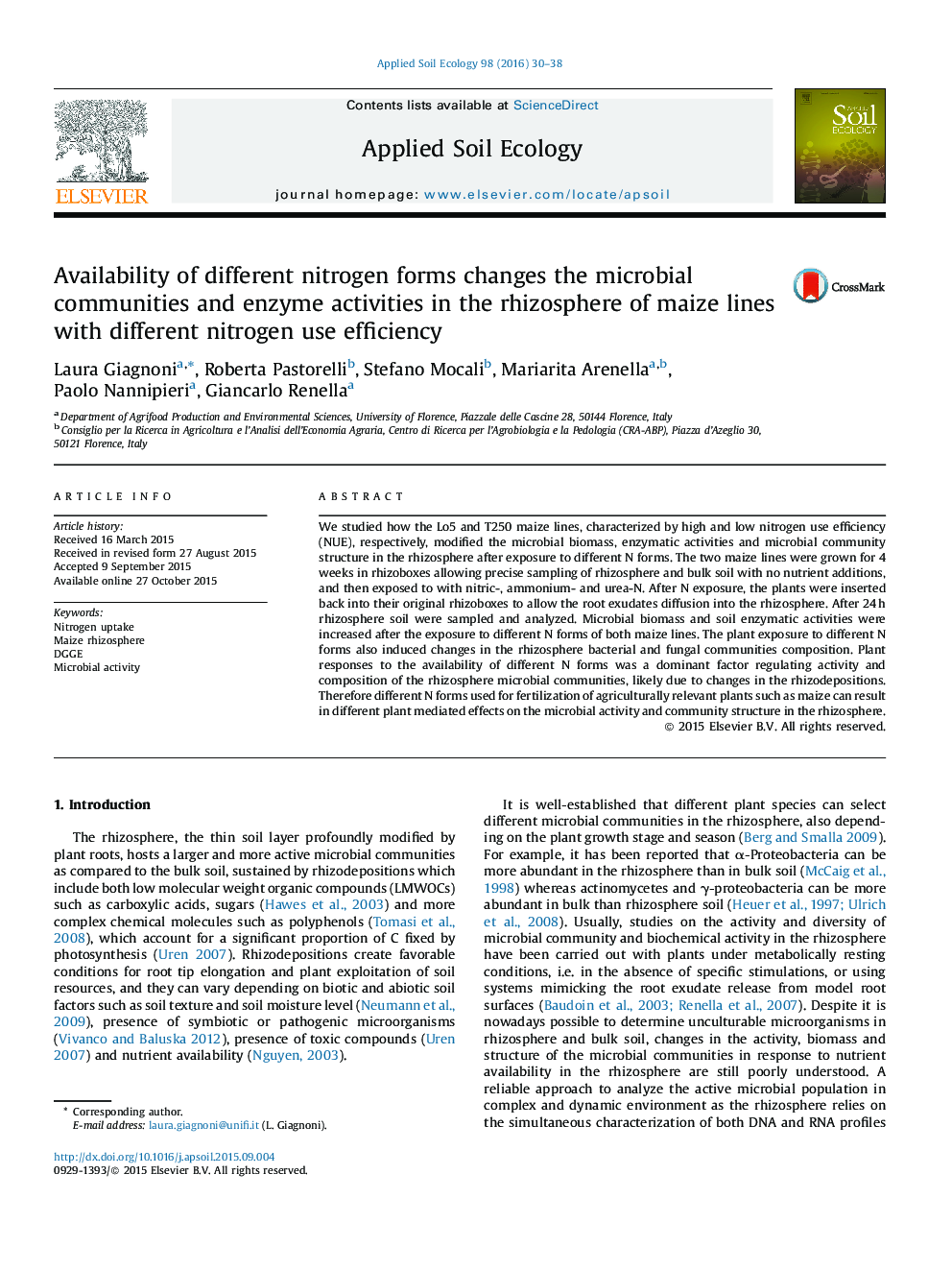| Article ID | Journal | Published Year | Pages | File Type |
|---|---|---|---|---|
| 4381854 | Applied Soil Ecology | 2016 | 9 Pages |
•We study the effect of different nitrogen source on the microbial activities of two imbred maize line rhizosphere.•The maize line influences the microbial communities composition and activities.•Different nitrogen treatments induce changes in microbial communities composition and activities.
We studied how the Lo5 and T250 maize lines, characterized by high and low nitrogen use efficiency (NUE), respectively, modified the microbial biomass, enzymatic activities and microbial community structure in the rhizosphere after exposure to different N forms. The two maize lines were grown for 4 weeks in rhizoboxes allowing precise sampling of rhizosphere and bulk soil with no nutrient additions, and then exposed to with nitric-, ammonium- and urea-N. After N exposure, the plants were inserted back into their original rhizoboxes to allow the root exudates diffusion into the rhizosphere. After 24 h rhizosphere soil were sampled and analyzed. Microbial biomass and soil enzymatic activities were increased after the exposure to different N forms of both maize lines. The plant exposure to different N forms also induced changes in the rhizosphere bacterial and fungal communities composition. Plant responses to the availability of different N forms was a dominant factor regulating activity and composition of the rhizosphere microbial communities, likely due to changes in the rhizodepositions. Therefore different N forms used for fertilization of agriculturally relevant plants such as maize can result in different plant mediated effects on the microbial activity and community structure in the rhizosphere.
